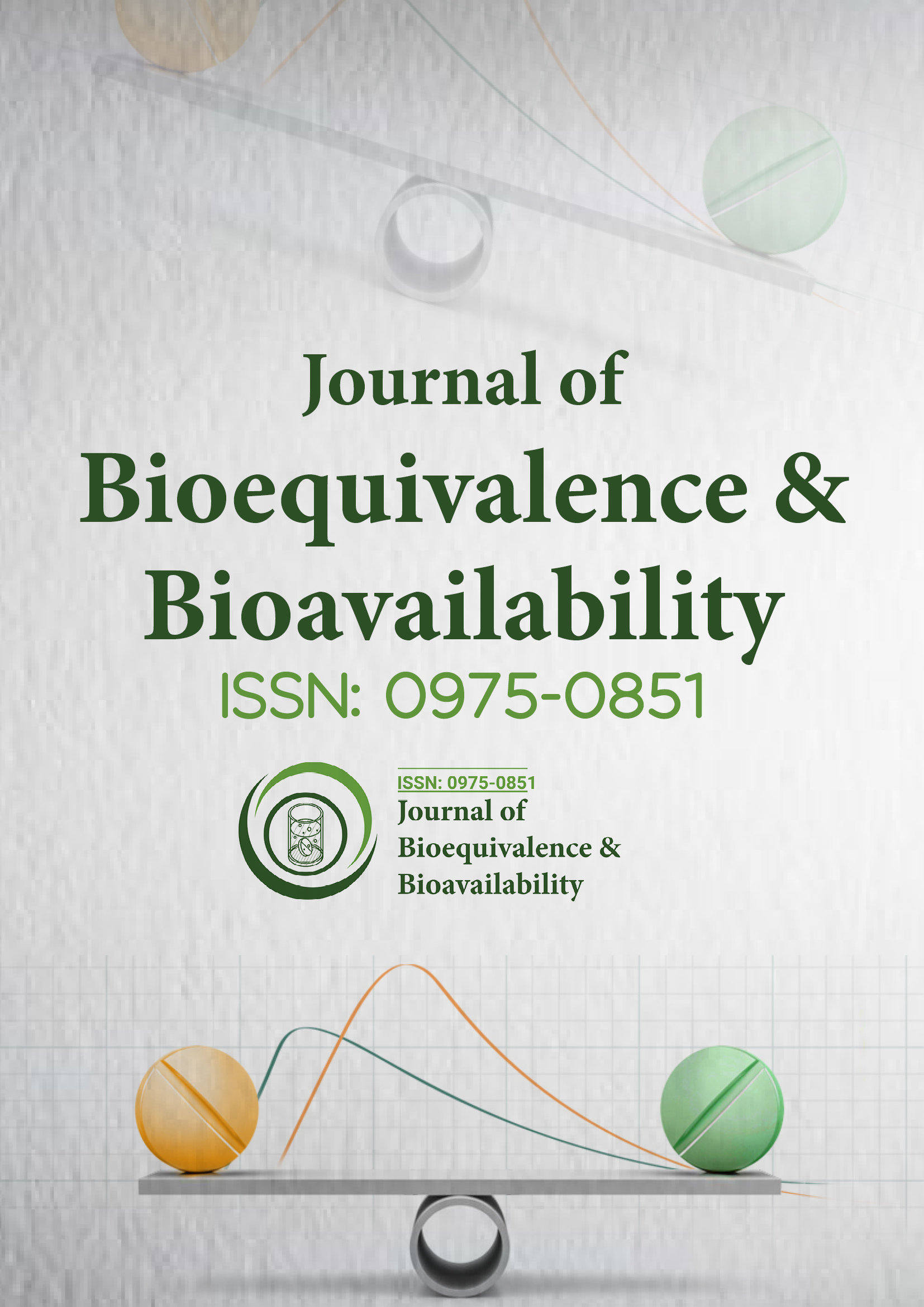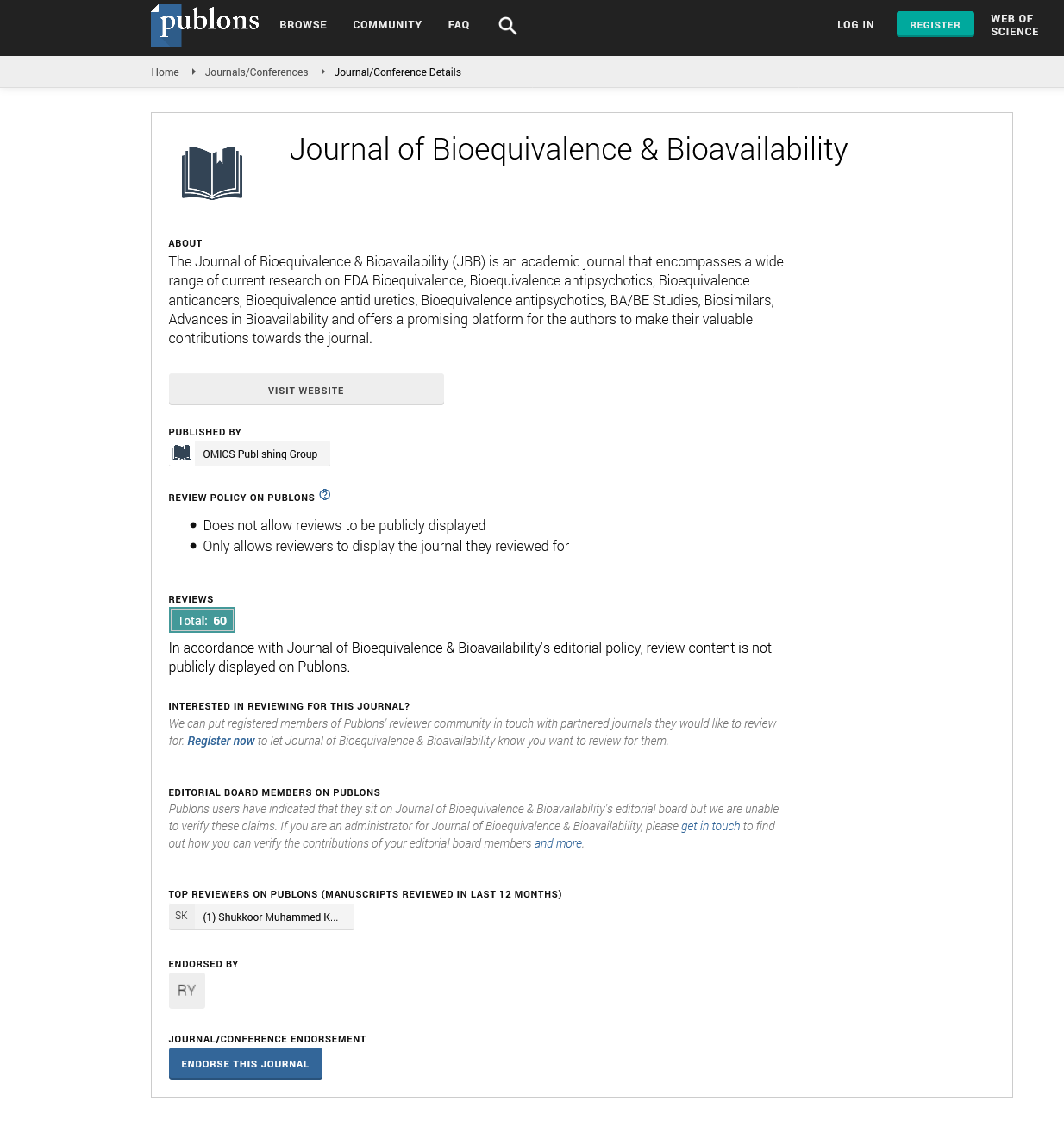Indexed In
- Academic Journals Database
- Open J Gate
- Genamics JournalSeek
- Academic Keys
- JournalTOCs
- China National Knowledge Infrastructure (CNKI)
- CiteFactor
- Scimago
- Ulrich's Periodicals Directory
- Electronic Journals Library
- RefSeek
- Hamdard University
- EBSCO A-Z
- OCLC- WorldCat
- SWB online catalog
- Virtual Library of Biology (vifabio)
- Publons
- MIAR
- University Grants Commission
- Geneva Foundation for Medical Education and Research
- Euro Pub
- Google Scholar
Useful Links
Share This Page
Journal Flyer

Open Access Journals
- Agri and Aquaculture
- Biochemistry
- Bioinformatics & Systems Biology
- Business & Management
- Chemistry
- Clinical Sciences
- Engineering
- Food & Nutrition
- General Science
- Genetics & Molecular Biology
- Immunology & Microbiology
- Medical Sciences
- Neuroscience & Psychology
- Nursing & Health Care
- Pharmaceutical Sciences
Perspective - (2025) Volume 17, Issue 2
Bioavailability Enhancement via Orally Disintegrating Tablets and Thin Films: Innovations for Special Populations
Elsawy Jon*Received: 03-Apr-2025, Manuscript No. JBB-24-28974; Editor assigned: 07-Apr-2025, Pre QC No. JBB-24-28974 (PQ); Reviewed: 21-Apr-2025, QC No. JBB-24-28974; Revised: 28-Apr-2025, Manuscript No. JBB-24-28974 (R); Published: 05-May-2025, DOI: 10.35248/0975-0851.25.17.627
Description
Bioavailability, the proportion of a drug that enters the systemic circulation and is thus available for therapeutic effect, has long stood as a critical consideration in pharmaceutical development. Enhancing bioavailability ensures that medications achieve their desired effect with greater efficiency, potentially reducing dosage requirements, improving patient adherence, and minimizing adverse effects. In recent years, advances in drug formulation, delivery systems, and nanotechnology have significantly transformed the landscape of bioavailability, promising new avenues for optimizing therapeutic outcomes across a broad spectrum of diseases.
Traditionally, oral drug delivery has remained the preferred route due to its convenience and patient compliance. However, a significant challenge associated with oral administration lies in poor solubility and permeability of many Active Pharmaceutical Ingredients (APIs). The Biopharmaceutical Classification System (BCS) categorizes drugs based on their solubility and intestinal permeability, and many promising therapeutic agents fall into Class II (low solubility, high permeability) or Class IV (low solubility, low permeability), where poor bioavailability hampers clinical efficacy.
To address these limitations, solid dispersion techniques have been employed. These involve dispersing the poorly soluble drug in an inert carrier matrix, typically a polymer, to enhance dissolution. Such systems transform crystalline drugs into amorphous forms, increasing their surface area and dissolution rate. Technologies like hot-melt extrusion and spray drying have become instrumental in creating such formulations, often resulting in several-fold improvements in bioavailability.
Lipid-based formulations have emerged as another strategy, especially for highly lipophilic drugs. Self-Emulsifying Drug Delivery Systems (SEDDS), which form fine oil-in-water emulsions upon contact with gastrointestinal fluids, facilitate rapid drug solubilization and absorption. These systems bypass certain metabolic pathways, such as hepatic first-pass metabolism, enhancing the extent of drug reaching systemic circulation.
Nanotechnology also plays a transformative role in this domain. Nanosuspensions and nanoemulsions provide a platform for increasing the surface area of drug particles, accelerating dissolution. Solid Lipid Nanoparticles (SLNs) and Nanostructured Lipid Carriers (NLCs) offer controlled release and targeted delivery, especially for drugs that are otherwise unstable or rapidly metabolized. These nanocarriers not only improve absorption but also enhance bioavailability by protecting the drug from degradation in the gastrointestinal tract.
Another promising innovation is the development of permeability enhancers. Compounds such as surfactants, bile salts, and fatty acids are used to transiently open tight junctions in the intestinal epithelium, allowing for improved paracellular transport of poorly permeable drugs. Although concerns remain about their long-term safety and reversibility, controlled and localized use of such agents shows great potential.
Orally Disintegrating Tablets (ODTs) and thin films have revolutionized the delivery of certain drugs, particularly for pediatric and geriatric populations. These systems rapidly dissolve in the mouth, releasing the drug for pre-gastric absorption, thereby bypassing the gastrointestinal tract to a large extent. Similarly, buccal and sublingual delivery systems enhance bioavailability by circumventing first-pass metabolism.
Transdermal Delivery Systems (TDDS) offer another viable route for enhancing bioavailability, especially for drugs that are poorly absorbed orally. Patches containing permeation enhancers or microneedle arrays facilitate the transport of drugs through the skin, providing sustained release and improved patient compliance. The ability to deliver systemic doses via the skin not only avoids gastrointestinal degradation but also offers a non-invasive alternative to injections.
Furthermore, the integration of Artificial Intelligence (AI) and machine learning in drug formulation and pharmacokinetics is accelerating the development of personalized medicines. Predictive models can simulate how a drug will behave in different individuals, allowing for optimization of formulation strategies to maximize bioavailability across diverse patient populations.
Biological therapeutics, such as peptides and proteins, pose unique bioavailability challenges due to their instability in the gastrointestinal tract and poor membrane permeability. Advances in encapsulation techniques, including hydrogels and polymeric nanoparticles, have enabled the oral delivery of biologics to a certain extent. Alternative routes, such as intranasal and pulmonary delivery, are also being explored to enhance systemic absorption of these complex molecules.
Citation: Jon E (2025). Bioavailability Enhancement via Orally Disintegrating Tablets and Thin Films: Innovations for Special Populations. J Bioequiv Availab. 17:627.
Copyright: © 2025 Jon E. This is an open-access article distributed under the terms of the Creative Commons Attribution License, which permits unrestricted use, distribution, and reproduction in any medium, provided the original author and source are credited.

